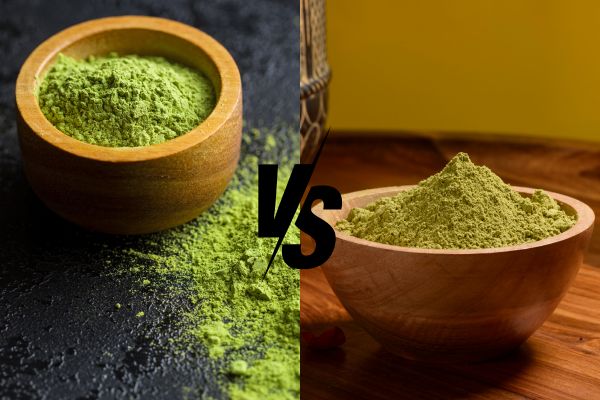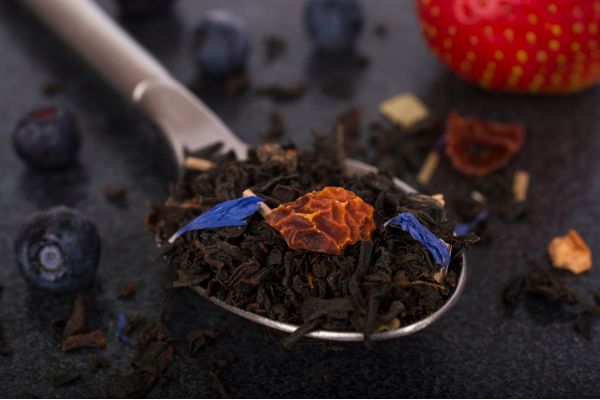When trying scented green tea, have you ever wondered how to put those floral scents on each leaf? Let’s explore the scenting process of one of the most popular teas – jasmine green tea.

Contents
Introduction
Jasmine green tea has become one of the most favored flower-scented teas in the world thanks to its harmonious flavor and calming properties. This blend combines the refreshing and grassy notes of green tea with the delicate floral flavor of jasmine flowers. The light astringent and sweet aftertaste of green tea and the gentle jasmine aroma bring a pleasant tea-drinking experience. You can find jasmine green tea in many forms, such as loose tea, tea bags, or ready-to-drink tea. In this article, FGC will introduce the scenting process to create fragrant jasmine green tea products.
Ingredient classifications
The two most important ingredients to make jasmine-scented green tea are tea leaves and jasmine blossoms. In addition, manufacturers can add jasmine flavors to enrich the floral flavors of the finished products. Jasmine season is often in the early summer, from May to July, and lasts about four or five months. From the beginning of the season, farmers start harvesting flowers and storing them for production. Traditionally, they pick flowers in the 2nd half of the afternoon, except on rainy days when the blossoms are closed.
In the scenting process, first, jasmine flowers are graded and sized. Workers must check the screening equipment to ensure the hygiene standards before putting flowers in. Jasmine flowers are screened, classified, and cleaned to obtain uniform flowers. The desired blossoms are not crushed and have a distinctive white color with few buds.

Jasmine green tea scenting
Scenting process
The best time to scent green tea with jasmine blossoms is when the flowers are 80% in bloom. Tea is scented directly on a clean stone floor. The ratio of flowers and tea quantity used for scenting is often 4:6, and the process usually lasts 12 to 15 hours. People divide tea leaves into beds, one layer of tea, and one layer of flowers, respectively. The tea beds are evenly distributed and about 30 – 40 cm thick. They are then covered entirely by a clean and white cloth.
After 8 or 9 hours of scenting, depending on the thickness of the tea beds, they are aired to reduce the temperature to about 42-45°C. Workers uncover the tea beds, using their hands to dig even holes with a diameter of 15-20 cm. These holes help lower the temperature of the whole bed. After that, the tea beds are covered again with clean cloth.
Drying process
After scenting, manufacturers screen the tea and flower mixture to remove the flowers. The tea left is dried using a charcoal dryer at 70-80°C, which helps retain its characteristic color and maximum jasmine aroma. The drying equipment uses a fan greater than 1800 rpm and a conveyor speed of about 600-620 rpm. The thickness of the tea layer on the conveyor is kept at 1-1.5cm. After drying, the water content of the tea reduces to 4-5%.
After the first drying, the tea is scented for about 5-10 days before the second drying. The second drying temperature is about 75°C with 1.5-2 cm thick tea layers. The conveyor speed is a little faster than the first time. Tea leaves, after being dried twice, are cooled down and left in room condition with humidity below 70%. They are then packed in PP bags and kept in storage to continue scenting. Depending on the uses, scented tea can be cut, screened, flavor-sprayed, and mixed with other ingredients.

Packaging final products
Storing semi-finish products
Producers keep qualified semi-finished products in the warehouse before packing them into final products. They must be sealed and labeled with identifying information, like raw material types, batch numbers, and conditions. If not used immediately, they must be placed on clean pallets which are free of termites and moisture. Before starting packaging, raw materials, while transporting, must be covered and shielded to avoid rain, dust, and dirt from the surrounding environment.
Packing final products
The packaging process is managed strictly, ensuring hygiene and safety conditions. The feeding areas, hoppers, and other tools must be cleaned to avoid cross-contamination. No semi-finished product residue and odor from the previous batch is left inside the equipment. The feeding hopper must have a screen to filter out trash and impurities. During the feeding process, bare hands are not allowed to direct contact with semi-finished products.
After feeding semi-finished products, machines pack them into small tea bags, attach tags, and put them into heat-seal covers. These tea bags are then packaged in paper boxes, shrink-wrapped, and put in cartons. Qualified finished products are stored and preserved before being released to the market. On the other hand, jasmine green tea leaves can be packed in vacuum bags weighing 500g or 1kg.
After production, the remaining raw materials and semi-finished products must be repackaged into PE/PP packaging. New and clean packaging is required to ensure good preservation for the next production. In addition, leftover packaging materials are removed from the machines, weighted, and wrapped tightly in clean PE/PP bags. Crucial information, such as material types, quantity, and production date, is well noted outside each bag.

Jasmine scented green tea products from FGC
Loose-leaf jasmine scented green tea
FGC’s loose-leaf jasmine scented green tea is made from Vietnamese green tea and jasmine flowers. It has a mildly astringent flavor, a floral aroma, and an iridescent yellow liquor hue. After drinking, it leaves a seductive flavor and a sweet aftertaste. Jasmine green tea is also known as a healthy drink with numerous health benefits, such as anti-aging, strengthening resistance, reducing fat absorption, and lowering the risk of cancer, diabetes, and heart diseases. In addition, it is favored as a base to make milk tea and is a perfect option for tea shops.
Jasmine green tea bags
Understanding customers’ need for convenience, FGC has launched jasmine green tea bags, which allow them to enjoy aromatic tea quickly. Just put a tea bag into a cup, pour hot water, and let it steep for a few minutes, you will get a delicious cup of jasmine green tea. The tea bag products still carry the signature characteristics and advantages of jasmine-scented green tea.

Conclusion
With FGC’s tea-scenting technology, each green tea leaf is scented with a characteristic aromatic jasmine flavor. Temperature and humidity conditions are strictly controlled to bring products with consistent quality. If you are looking for a prestigious supplier of jasmine green tea, FGC is an option worth considering!
About Future Generation Co.,Ltd
Future Generation Company Limited is one of the largest beverage suppliers in Vietnam, with 27 years of experience in production and export. FGC is equipped with modern machines such as Hotfill PET and TetraPak, ensuring high-capacity production. FGC strives to achieve our mission to become Vietnam’s leading healthy beverage company. Our factories also meet international standards such as ISO, HACCP, etc. In addition, we constantly innovate our machinery system, strengthen production capacity, and increase productivity.
FGC also provides Private Label Services. With this service, we can help customers in researching and formulating beverages, designing product label packaging, and creating their own brands. This is an ideal solution for small and medium enterprises. Moreover, FGC provides free samples for customers to test before bulk orders. We also ensure delivery as fast as possible.
Contact
Address: R4 building, Office Quarter 02, Royal City, 72A Nguyen Trai St., Thanh Xuan Dist., Hanoi.
Phone: +84 24 73 000 125/ +84 24 73 063 369
Mail: info@vietnam-tea.com
Website: https://oem-fgc.com/
Facebook: https://www.facebook.com/fgcvietnamtea










